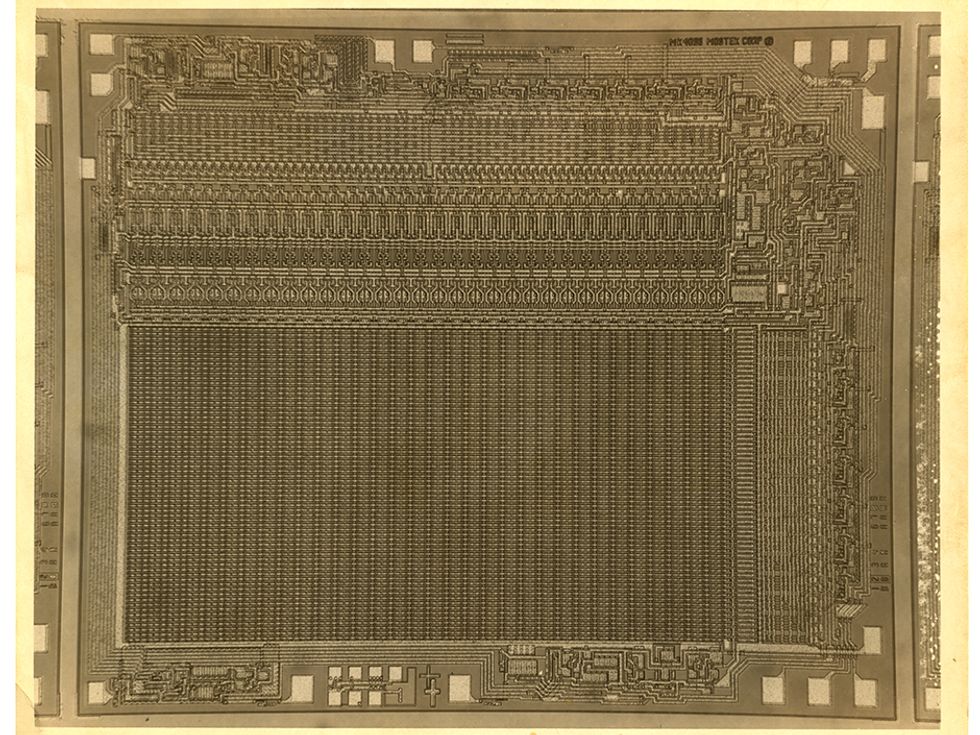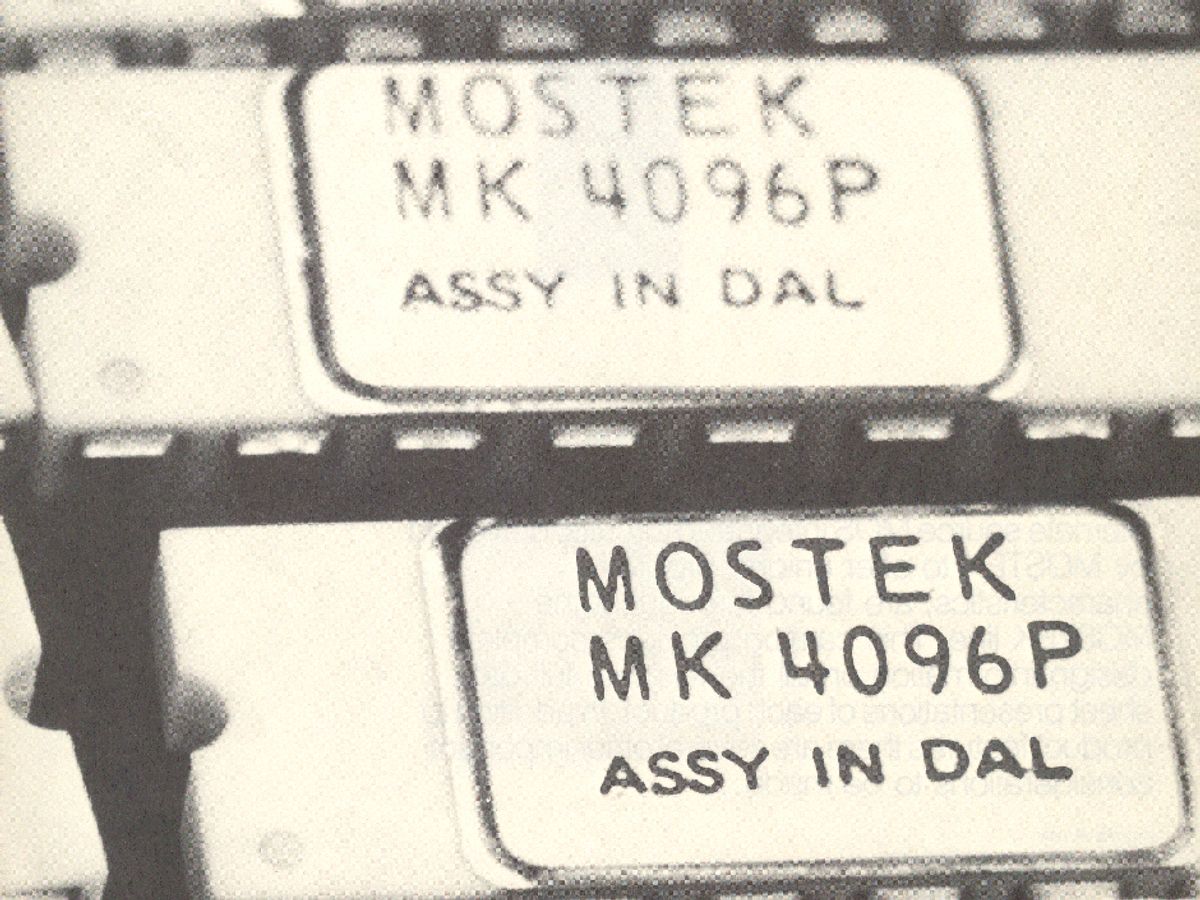MK4096
4-Kilobit DRAM
Manufacturer: Mostek
Category: Memory and Storage
Year: 1973
Computers use random access memory, or RAM, as their workspace when running programs, and RAM chips today come in two flavors—static and dynamic RAM, or SRAM and DRAM. As long as the computer is powered up, SRAM will retain its contents, while DRAM must be constantly refreshed. The advantage of DRAM over SRAM is that the simplicity of each memory cell means a lot more data can be packed into a given space. Today most computers use DRAM for their main memory.

The first DRAM chip was put out by Intel. But Mostek’s 4-kilobit DRAM chip brought about a key innovation, a circuitry trick called address multiplexing, concocted by Mostek cofounder Bob Proebsting. Basically, the chip used the same pins to access the memory’s rows and columns. It did so by sending row and column addressing signals in turn, rather than all at once as in earlier designs. As a result, the chip didn’t require more pins as memory density increased and could be made for less money. There was just a little compatibility problem. The 4096 used 16 pins, whereas the memories made by Texas Instruments, Intel, and Motorola had 22 pins. What followed was one of the most epic face-offs in DRAM history. With Mostek betting its future on the chip, its executives set out to proselytize customers, partners, the press, and even its staff. Fred K. Beckhusen, who as a recent hire was drafted to test the 4096 devices, recalls when Proebsting and chief executive L.J. Sevin came to his night shift to give a seminar—at 2 a.m. “They boldly predicted that in six months no one would hear or care about 22-pin DRAM,” Beckhusen says. They were right. The 4096 and its successors became the dominant DRAM for years, and address multiplexing became the standard way to handle ever larger memories.



